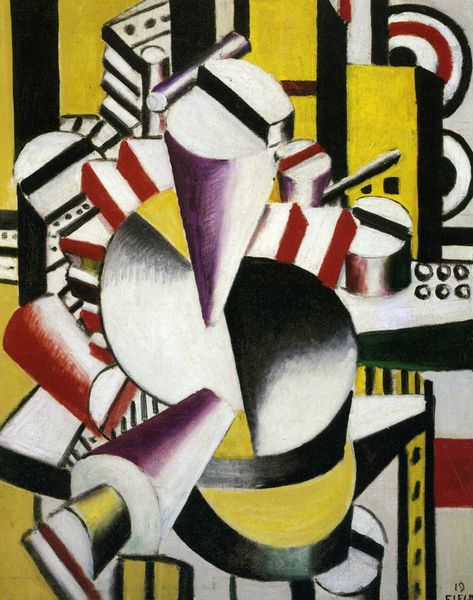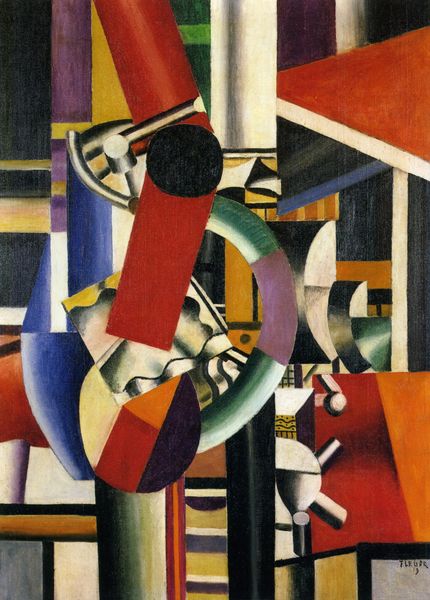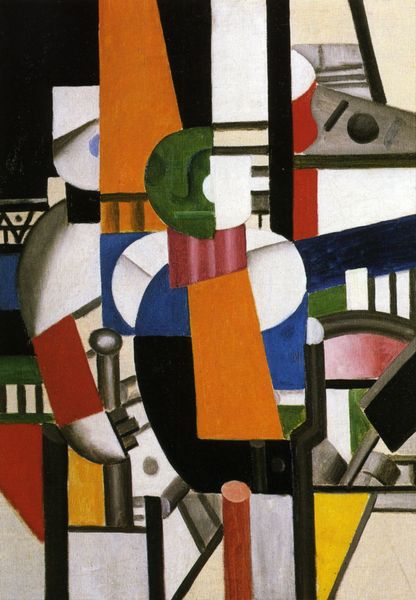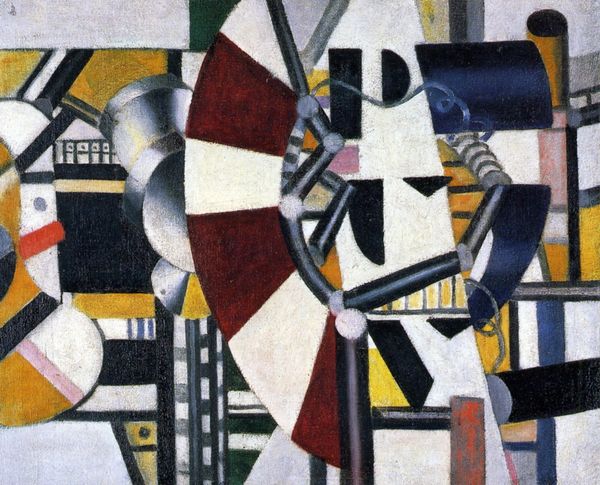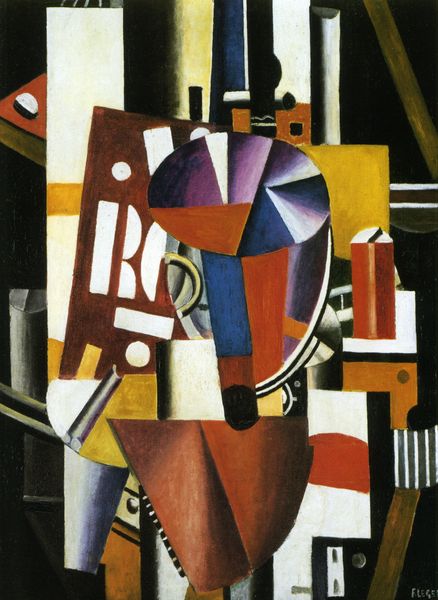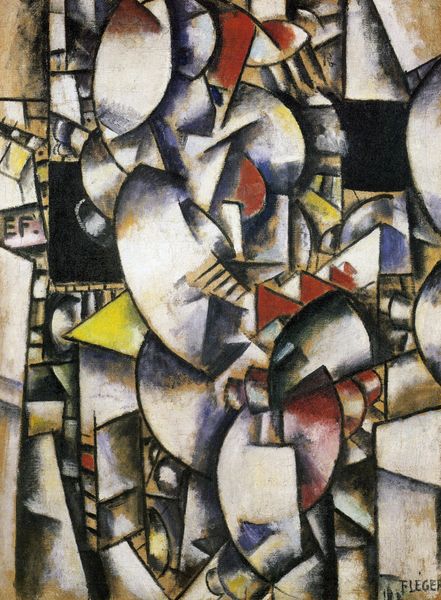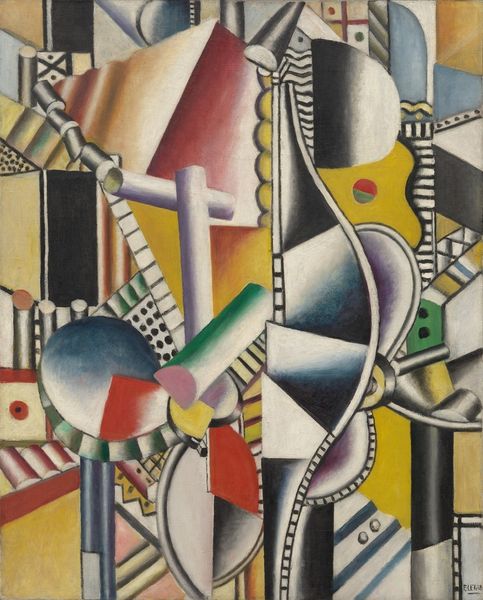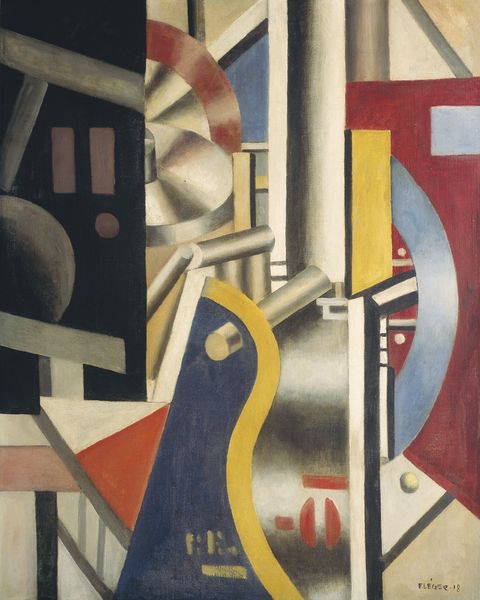
painting
#
art-deco
#
cubism
#
abstract painting
#
painting
#
figuration
#
geometric-abstraction
#
history-painting
#
modernism
Copyright: Public domain US
Curator: Looking at Fernand Léger's "Acrobats in the Circus" from 1918, what strikes you first? Editor: It’s intense! The interplay of geometric forms almost feels… violent? The palette, while restricted, pulsates. I can imagine the sounds, the tension, the raw physical labor behind a circus performance in those early 20th century years. Curator: Precisely. This painting is less about representing a circus literally, and more about the dynamism of the modern world. Léger was fascinated by machinery, and the human body transformed into a sort of machine at the service of labor or, here, spectacle. Think about how the context of World War I shaped the mechanization of life in all fields. Editor: You’re right, those cylinder shapes that suggest limbs feel like interchangeable parts, mass-produced. Is Léger commenting on the commodification of the body within these popular spectacles and during mass production of those times? Curator: In a way, yes, but also celebrating the resilience of the working class and, more abstractly, the power of the image in constructing a new order, that some would call “Art Deco”. The shapes are clearly defined and clean, which reminds me a little about the streamlined design that began to penetrate into societies through product design and other industrial and manufacturing operations. Editor: So, for Léger, the canvas became a site for exploring the tensions of this period? A constant tug-of-war between human labor and mechanical precision? Curator: Exactly. And by using oil on canvas, which at that time was an industry itself, to depict acrobats, he deliberately blurs those established hierarchies of art. The value comes not just from skilled representation but also the conscious integration of the painting within an evolving world where consumerism, manufacturing, and production start to dominate people’s lives. Editor: It gives us a lot to reflect on, doesn't it? From materiality to broader historical anxieties, there's such a depth layered within this dynamic composition. Curator: Agreed. "Acrobats in the Circus" urges us to consider art as an entity that not only produces something tangible but participates as an agent into the formation of political thought.
Comments
No comments
Be the first to comment and join the conversation on the ultimate creative platform.
